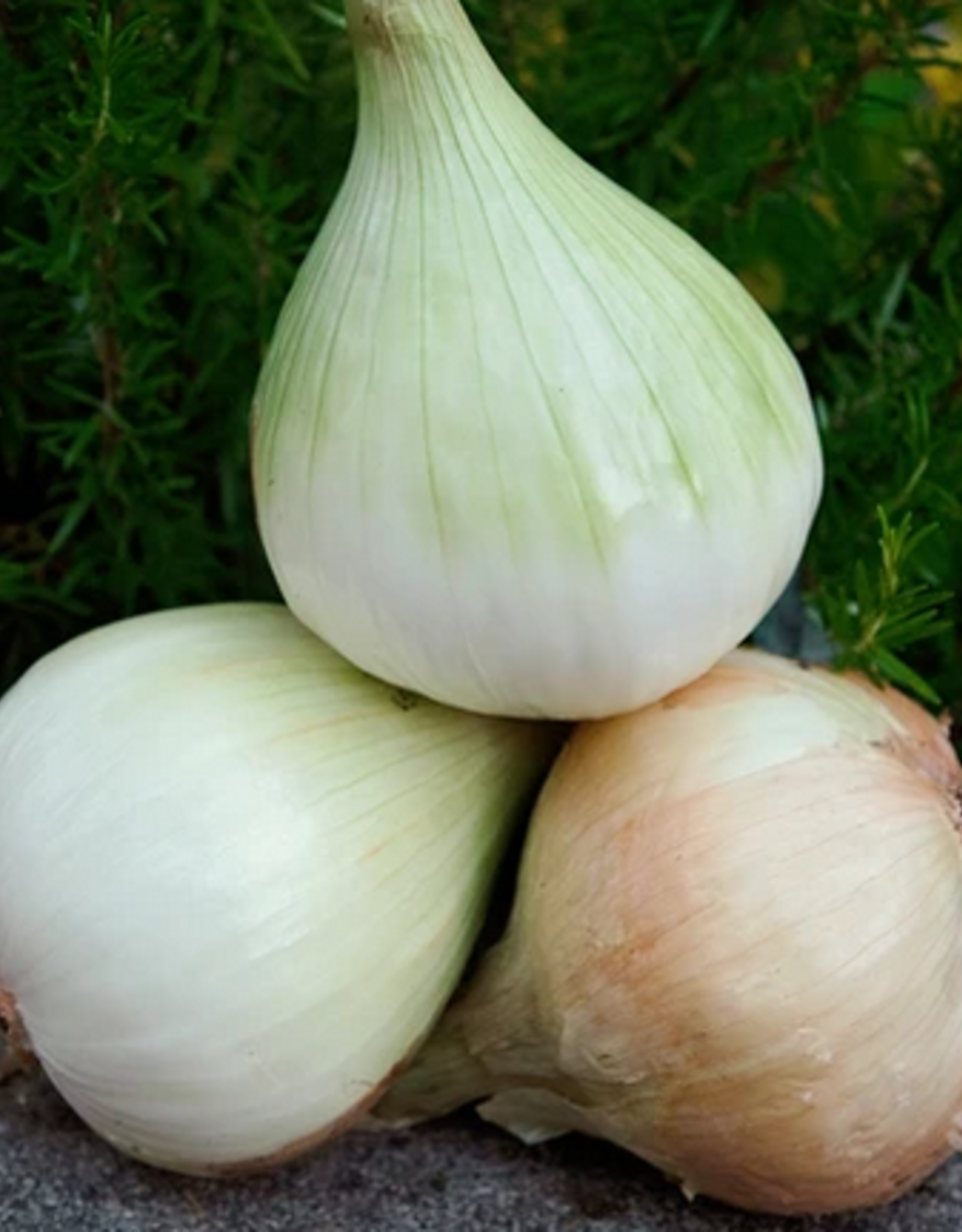ONION WALLA WALLA 1 gram
| Availability: | Out of stock |
Photo and Description Credit - Territorial Seed Company
125 days when spring sown. When fall sown and allowed to overwinter, the round globes often attain a 5-6 inch diameter. For those of you in harsher climates, this onion can be spring sown. Start them early and transplant out as soon as the soil can be worked. The bulbs will be smaller, 2 ½-3 inches across, but they'll have the same sweet flavor. Plan to use quickly, they're not meant for long-term storage. Sweet type; stores 1-2 months. Long-day variety.
Tips for overwintering: Sow seed at the beginning of August. Once they are large enough, around mid-October, transplant into the garden. You can harvest green onions until April. In May they will begin to bulb and will be ready to harvest as dried down bulbs by mid to late-June.
More Information
| Soil Temp for Germ | 50–75°F |
| Seed Depth | ⅛–½" |
| Seed Spacing | 2–4/inch |
| Days to Emergence | 6–16 |
| Thin Plants to | 2–7" |
| Row Spacing | 12–24" |
| Fertilizer Needs | Medium |
| Minimum Germination | 75% |
| Seeds per Gram | ≈ 200 |
| Seed Life | 1 year |
Allium cepa
Days to maturity are calculated from date of direct seeding.
Culture
• Onions are photoperiodic plants — they regulate their stages of growth by day length
• Onions will make top growth until the critical light duration is reached, then bulbing begins
• The amount of growth and development prior to bulbing will determine the bulb size
• Long-day varieties do well in northern states where summertime day length is between 14-16 hours
• Short-day varieties do well in southern states and bulb when day length is 10-12 hours; they won't get very large in northern states
• Dividing line between short-day and long-day varieties is generally accepted as 36° latitude, roughly along the Kansas/Oklahoma border
• Day-neutral and intermediate-day varieties start bulbing when day length is 12-14 hours; can be successfully grown anywhere
• Onions prefer light, sandy, loamy soils
• Apply 1/4-1/2 cup of TSC's Complete fertilizer per 5 row feet, 1-2 inches below transplant or seed
Direct Sowing
• Thin to the strongest plant when 4-5 inches
Transplanting
• Sow up to 10-12 seeds in a 4-6 inch pot
• If tops reach over 5 inches before transplant, cut to 3 inches
• When planting out carefully separate the seedlings and place in a shallow trench
• Fill trench around seedlings and water in well
Insects & Diseases
• Common insects: Onion thrips and maggots
• Insect control: Neem oil or Predatory Nematodes
• Common diseases: Fusarium basal rot, pink root
• Disease prevention: 5-7 year crop rotation
Harvest & Storage
• For scallions: harvest when pencil size or larger, wash and trim roots, store in a bag at 36°F and 95% relative humidity
• As bulbs approach maturity, withhold water so protective paper can form
• After about half the tops have fallen, push over the remainder; wait about 1 week then harvest
• Cure in a warm (75-80°F), shaded, well-ventilated location until outer skin and necks are dry, then trim tops, leaving one inch above the bulb
• Store in a cool, dry, well-ventilated area
• Check occasionally and immediately remove any sprouting or rotting onions
What is pelleted seed?
Seed that has been coated with a clay-based material to form a larger, round shape. This makes planting by hand or mechanical seeder easier and allows for more controlled sowing of small seeds such as carrots or lettuce. All pelleted seed has a National Organic Program (NOP) approved coating.



